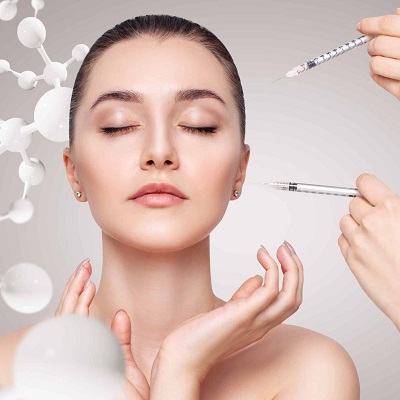Dermal fillers have gained widespread popularity as a non-surgical solution for achieving youthful and vibrant skin. These injectable treatments are designed to restore lost volume, smooth out wrinkles, and enhance facial contours, making them an appealing option for many individuals. However, like any cosmetic procedure, dermal fillers are not without potential side effects. Understanding these risks can help you make an informed decision before undergoing treatment.
What Are Dermal Fillers?
Dermal fillers in Islamabad are substances injected into the skin to add volume and fullness. The most commonly used fillers contain hyaluronic acid (HA), a naturally occurring substance in the body that helps maintain skin hydration and elasticity. Other types of fillers may include calcium hydroxylapatite, poly-L-lactic acid, and fat injections. Each type has unique properties, durations of effect, and areas of use.
Common Side Effects of Dermal Fillers:
While many people experience minimal side effects, some may encounter more significant reactions. Here are the most common side effects associated with dermal fillers:
1. Swelling and Bruising:
Mild swelling and bruising at the injection site are the most frequently reported side effects. These effects are usually temporary and can last from a few hours to several days. Swelling may be more pronounced if fillers are injected into areas with thinner skin, such as the lips or under the eyes. To minimize swelling, it’s advisable to avoid alcohol and blood-thinning medications for a few days before the procedure.
2. Redness and Tenderness:
It’s common for the treated area to appear slightly red and feel tender following the injections. This reaction is generally mild and resolves within a few days. Applying a cold compress can help alleviate these symptoms and reduce inflammation.
3. Lumps and Bumps:
In some cases, individuals may notice small lumps or bumps beneath the skin after receiving fillers. These can occur if the filler is not evenly distributed. Gentle massage can often help smooth out these irregularities, but if they persist, a follow-up appointment with your practitioner may be necessary.
4. Itching or Rash:
Some people may experience itching or a mild rash around the injection site. These symptoms are usually short-lived and can be managed with over-the-counter antihistamines or topical treatments. However, if itching is severe or accompanied by swelling, it may indicate an allergic reaction that requires medical attention.
Rare but Serious Side Effects:
While most side effects are mild and resolve quickly, there are potential serious complications associated with dermal fillers that individuals should be aware of:
1. Infection:
Though rare, infections can occur at the injection site. Symptoms of infection include prolonged redness, swelling, warmth, or the presence of pus. If you suspect an infection, it’s essential to seek medical help promptly. Practitioners should follow strict hygiene protocols to minimize this risk.
2. Allergic Reactions:
Although uncommon, some individuals may have an allergic reaction to the ingredients in dermal fillers. Signs of an allergic reaction can include severe swelling, hives, or difficulty breathing. If you have known allergies, it’s crucial to discuss this with your practitioner before treatment.
3. Vascular Complications:
One of the most serious risks of dermal fillers is vascular occlusion, which occurs when the filler inadvertently enters a blood vessel. This can disrupt blood flow to the skin and lead to severe pain, skin discoloration, or even necrosis (tissue death). Immediate medical intervention is necessary if you experience these symptoms after treatment.
4. Migration of Filler:
In rare instances, the filler can migrate from the original injection site, resulting in an uneven appearance. This may occur due to the filler being placed too superficially or if too much is injected. If migration occurs, adjustments or additional treatments may be necessary to achieve the desired results.
Minimizing the Risk of Side Effects:
To reduce the likelihood of experiencing side effects, consider the following tips:
- Choose a Qualified Practitioner: Always seek treatment from a licensed and experienced dermatologist or plastic surgeon. Their expertise can significantly reduce the risk of complications.
- Follow Pre-Procedure Guidelines: Avoid alcohol, blood thinners, and non-steroidal anti-inflammatory drugs (NSAIDs) for at least 24 hours before your treatment. This can help minimize bruising and swelling.
- Communicate Openly: Discuss your medical history, including any allergies or previous cosmetic procedures, with your practitioner. This information is crucial for tailoring the treatment to your specific needs.
- Post-Treatment Care: Follow your practitioner’s aftercare instructions carefully. This may include avoiding strenuous exercise, excessive sun exposure, and touching the treated areas for a few days.
Conclusion:
While dermal fillers are generally safe and effective for enhancing facial aesthetics, they do carry potential side effects ranging from mild to severe. Understanding these risks and taking steps to minimize them can lead to a more positive experience. If you’re considering dermal fillers, it’s crucial to consult with a qualified professional who can guide you through the process and address any concerns you may have. With the right approach, dermal fillers can help you achieve the youthful, radiant look you desire while keeping side effects to a minimum.
For more information visit Dynamic Clinic PK.



